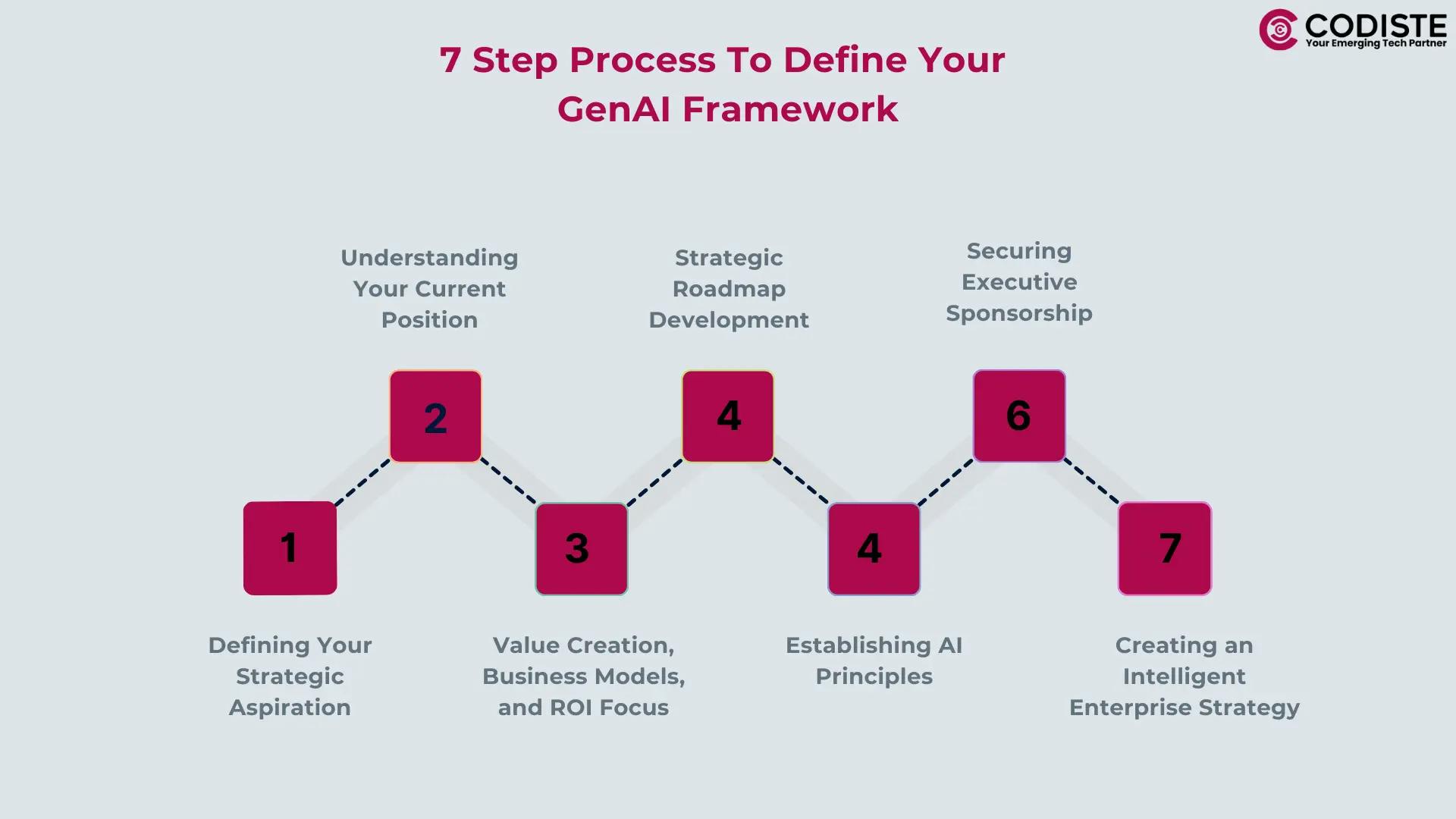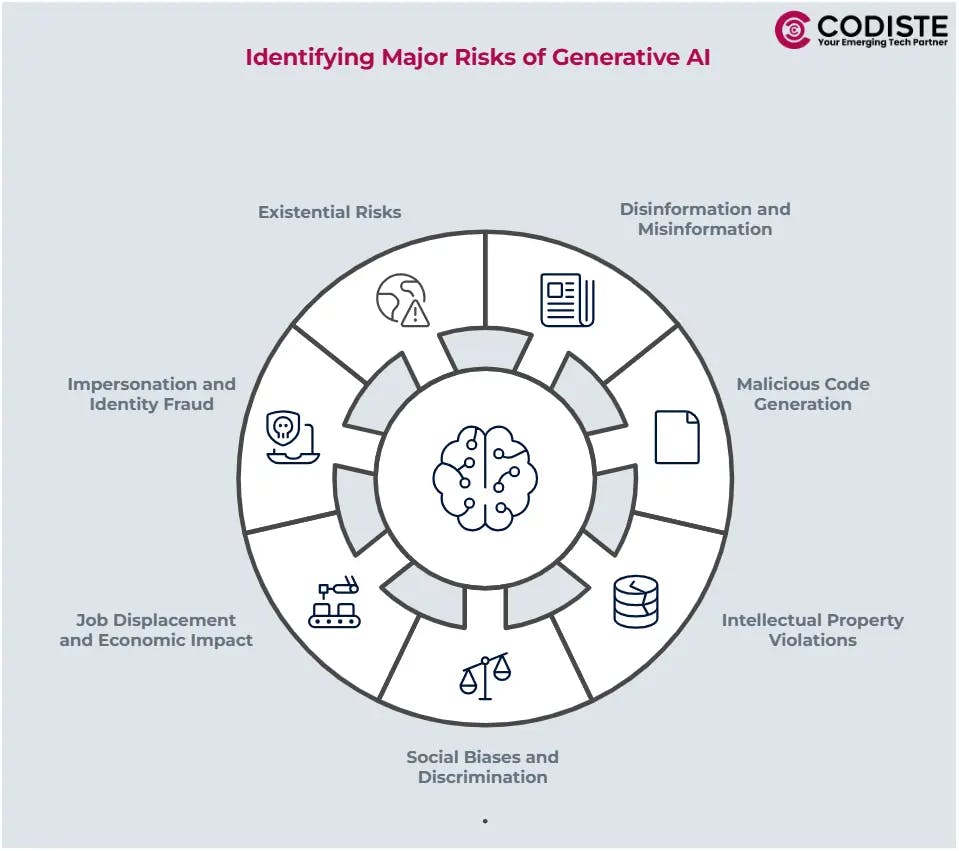
,
The AI landscape is rapidly evolving, and the connection between technology and value has become apparent. Technological application is not necessarily enough; results and business outcomes do matter. The objective measure of success for Generative AI(GenAI) has been how it enables enterprise strategies and drives tangible value. Organizations are scaling and learning from their GenAI pilots by effectively integrating AI tools into their core processes to develop comprehensive development strategies.
After all the hype over artificial intelligence (AI), the value is hard to find. CEOs have authorized investments, hired talent, and launched pilots—but only 22% of companies have advanced beyond the proof-of-concept stage to generate some value, and only 4% are creating substantial value. BCG
The discourse around GenAI has shifted from raw excitement to a more nuanced and critical evaluation of its impact on business, followed by the outcomes. Now, organizations are more focused on tailored GenAI tools—like small language models (SLMs)—for more targeted needs while exploring the rise of AI agents to redefine interactions within their digital environments.
The transformative potential of generative AI spans multiple industries, from healthcare’s improved diagnostics to financial services’ enhanced risk assessment and manufacturing’s optimized quality control. Organizations that have implemented GenAI strategically have reported significant productivity gains and cost reductions, though the success entirely depends on realistic expectations and proper digital transformation implementation frameworks. Enterprise AI plays a crucial role in large businesses by managing complex workflows, addressing data governance, and enhancing operational efficiency. In this guide, we will see all the essentials and implementations of GenAI in business to get the outcomes that can make an impact.
Understanding Generative AI
What do people mean when they say “generative AI?” The answer would be ChatGPT and its counterparts, but to your surprise, it goes way beyond that.
Are they talking about the ML models that can learn to make a prediction based on data? Well, think of this in a more modified and updated way: this is a machine-learning model trained to create new data. Here, the catch is that a GenAI system learns to generate more objects that look like the data it was trained on.
Artificial intelligence technologies encompass both general AI applications and enterprise AI. While general AI applications focus on specific tasks, enterprise AI is designed for complex business environments, integrating AI across multiple processes. GenAI, a subset of these technologies, showcases the ability to create new content using advanced machine learning models.
With each passing year, these systems have been trained as deep-learning models that can take raw data — say, the number of books your neighbourhood library might have — and then these models will learn to generate statistically probable outputs when prompted through data collected from each book. At times, generative models can encode a simplified representation of their data at a higher level and draw a new work similar to the original data but not identical.
The Generative models of the past were used in statistics to analyze numerical data. Still, with the rise of deep learning, extending their utility to process complex data, speech, images, and other possibilities is possible.
Trivia —much of what we think of today as generative AI started with variational autoencoders, or VAEs, introduced in 2013. VAEs were the first deep-learning models widely used for generating realistic images and speech.
De-coding The GenAI Technology
Industry analyst Gartner projects more than 80% of organizations will have deployed or used GenAI application programming interfaces (APIs) by 2026 - Gartner
But do you know how this process of identifying ginormous amounts of data and then creating an outcome out of it works.
Well, here’s the answer: for the most part, GenAI operates:
Training
They use foundation models trained on massive, unlabeled datasets to predict sequences like text, images, or code. These compute-intensive models, including LLMs and multimodal models, generate content autonomously. Pre-trained models like Meta’s Llama-2 reduce costs by providing a ready-to-use foundation. Data analytics is crucial in this training process as it enhances efficiency and facilitates informed decision-making.
Tuning
Tuning adapts foundation models for specific tasks. Fine-tuning uses labelled datasets to improve accuracy, while RLHF incorporates user feedback to refine outputs. These methods transform generalist models into application-specific tools.
Generation and Evaluation
These apps need regular evaluation and tuning to stay accurate. Retrieval augmented generation (RAG) boosts performance by incorporating external, up-to-date information, ensuring transparency and relevance beyond the original training data.
Evolution of Generative AI Model Architectures
- Variational Autoencoders (VAEs): Introduced in 2013, VAEs compress data into parameters and generate multiple variations. They're used for anomaly detection, medical imaging, and natural language generation, though less suited for high-quality content creation.
- Generative Adversarial Networks (GANs): Developed in 2014, GANs consist of two neural networks—generator and discriminator—that refine outputs through adversarial training. It is ideal for image and video generation, style transfer, and data augmentation.
- Diffusion Models: These models were also introduced in 2014, adding and removing noise to produce high-quality outputs. It is slower to train but offers fine-grained control, as seen in tools like DALL-E.
- Transformers: Documented in 2017, transformers revolutionized AI with attention mechanisms, enabling faster training and high-quality content generation. They excel in natural language processing and power today's top generative tools like ChatGPT, GPT-4, and Bard. Transformers are the backbone of modern AI, producing longer, context-aware content with remarkable precision.
Technologies used by GenAI
As enterprises fervently use AI for various purposes, we have seen its rapid industry-wide implementation. This AI can generate marketing content, pitch documents and product ideas, create sophisticated advertising campaigns, and much more, but what is the technology behind this peculiarity? Let’s check
Here’s a clear breakdown of each type of GenAI technology:
Large Language Models (LLMs): These are advanced AI systems trained on vast amounts of text data to understand and generate human-like text. LLMs like GPT-4 can engage in conversations, write content, analyze text, answer questions, and help with tasks like summarization and translation. They work by predicting the most likely following words in a sequence based on their training data, making them useful for everything from customer service to content creation and data analysis.
Image Generation Models: These AI systems can create, edit, and modify images based on text descriptions or other images. Models like DALL-E, Midjourney, and Stable Diffusion can generate highly realistic or artistic images from text prompts. They work by learning patterns from millions of image-text pairs, allowing them to create new images that match specific descriptions or style requirements. Business applications include product design, marketing materials, and rapid prototyping. Additionally, data visualization plays a crucial role in interpreting the generated images, making it easier to present and understand the data effectively.
Code Generation: These specialized AI models are trained in programming languages and can help write, complete, and debug code. Tools like GitHub Copilot can suggest code completions, generate entire functions based on comments, and allow developers to work more efficiently. They understand programming syntax, best practices, and common patterns across multiple programming languages, making them valuable for software development and automation tasks.
Audio and Video Synthesis: These models can generate, manipulate, or transform audio and video content. They can create human-like speech, music, or sound effects for audio. Video synthesis models can generate new videos, edit existing ones, or transform still images into animated content. Applications include:
- Text-to-speech for content accessibility
- Voice cloning for localized content
- Background music generation
- Video content creation and editing
- Virtual presenters and avatars
Building Starategic Framework of Generative AI
Business leaders lack a strategy aligned with business objectives, hence the need for a structured framework to strategically exploit and integrate its capabilities.
The few organizations that made successful progress realized how a holistic approach spans from initial proof-of-concept to pilots to embedding AI across the entire enterprise. This comprehensive rethinking of business operations is essential for true digital transformations beyond mere digitization of existing processes.
Their strategies are comprehensive and go beyond identifying potential use cases. They also address critical elements such as articulating the general ambition, cultivating the right internal culture and workforce, defining execution plans, and maintaining an evolving roadmap as technology advances. Thus, the adoption process is a short-term project but an ongoing journey.
In this chapter, we will learn from that structured understanding by outlining a practical framework to synchronize an organization’s digital transformation with AI initiatives and its commercial vision and goals.
Why Does A GenAI Framework Matter?
A GenAI framework is crucial to business strategy because it leads to a clear path that can help businesses. A well-defined framework will ensure all initiatives and business objectives are in sync, allocate resources efficiently, and address data privacy challenges, ethical considerations, and their impact inside and outside the organization.
Developing an AI framework becomes even more significant with its diverse technological applications, from healthcare to marketing and advertising, content creation, customer engagement, and many more. These developments thus prove the need for an approach that aligns with business objectives and moves them forward.
A Robust GenAI Framework Can:
- Improve Innovation and Decision-making: A well-defined framework clarifies how the technology works so executives can foster a culture of innovation and make informed decisions. Whether exploring new use cases or implementing creative solutions, companies can differentiate themselves and stay ahead of the competition.
- Better Risk Management For Ethical Practises: Imagine an AI framework that provides proactive risk assessment and mitigation plans so that when potential challenges arise, they are ready. By incorporating such practices, companies can match these initiatives with their values and societal expectations – building trust with stakeholders and minimizing potential risks.
- Optimise Resources and Operational Efficiency: A clear framework enables organizations to effectively allocate resources – such as capital, people, and data – to high-impact initiatives. This can improve operational efficiency by automating and streamlining processes, enabling employees to focus on higher-value tasks and boosting overall productivity.
- Fortify Customer Experiences and Loyalty: When you integrate GenAI into your services and workflows, this further enables you to deliver more personalized, engaging, and enriched customer experiences. When technology is used to recognize, predict and analyze customer needs, businesses can strengthen loyalty and customer satisfaction, thus ultimately driving business growth.
An agile GenAI framework can foster an environment where the business can generate creative solutions and explore better opportunities with calculated foresight, keeping enterprises' technological pursuits aligned with its vision. Further ahead, we will see how this can help by understanding the entire framework.
Read more:
What is Generative AI?
How Generative AI Is Changing the Face of Customer Experience in Fintech
Developing Generative AI Responsibly with Security and Ethical Best Practices
Top 5 Podcast Use Cases of Generative AI in 2025
Top 10 Real Estate Use Cases of Generative AI in 2025
What is Style Generative Adversarial Networks?
The Generative AI Framework
The framework aims to provide business leaders a holistic approach to integrating transformative AI solutions into their strategies. It focuses on structured and sustainable implementation to achieve long-term competitive advantages and accelerate business outcomes.
The framework includes a comprehensive roadmap that outlines each execution step, covering all deployment aspects, including data collection, model training, deployment, and monitoring. It addresses data privacy, security, and ethical issues to ensure responsible and compliant AI initiatives. Evaluating and enhancing generative AI capabilities is crucial for assessing current technological maturity and identifying gaps, allowing organizations to set achievable targets and develop a roadmap for improving functionalities across various applications, including natural language processing and image generation.
Additionally, the framework enhances resource management and decision-making by helping businesses identify necessary skills and expertise for different implementation stages, facilitating efficient team assembly and resource allocation.
A seven-step process to define your strategic vision of the intelligent enterprise
1. Defining Your Strategic Aspiration
AI-powered enterprise solutions demand a clear vision that goes beyond technology adoption. This vision must articulate how AI can transform core organizational operations, provide better customer experiences, and improve the overall market position. The key is to think boldly yet practically about AI's role in your business future. Consider how it could revolutionize your product offerings, streamline operations, or create new business models. Your strategic aspiration shouldn't just focus on keeping up with competitors—it should define how you'll lead your industry through AI innovation. This vision becomes your north star, guiding all subsequent AI initiatives and investments.
2. Understanding Your Current Position
Before embarking on any AI implementation, conducting a thorough assessment of your organization’s starting point is crucial. This means looking hard at your existing technological capabilities, data infrastructure, and talent pool. Evaluate your data quality and accessibility, as these form the foundation of any successful AI initiative. Additionally, consider the challenges posed by legacy systems, which can complicate the adoption of new technologies and lead to significant workflow interruptions. Simultaneously, analyze your competitors' AI initiatives and identify market gaps where AI could give you a competitive edge. This assessment phase isn't just about identifying weaknesses—it's about discovering unique opportunities where your organization's strengths could be amplified through AI adoption.

3. Value Creation, Business Models, and ROI Focus
The success of your AI strategy hinges on its ability to deliver measurable business value. Begin by identifying areas where AI can drive immediate impact while building towards longer-term transformational goals. Focus on projects that can demonstrate clear ROI within the first year—these early wins are crucial for building organizational confidence and securing continued support for AI initiatives. Develop a balanced portfolio of AI projects, mixing quick wins with more ambitious, longer-term transformations. Remember that value creation isn't just about cost reduction; consider how AI can drive revenue growth, improve customer satisfaction, and create competitive advantages.
4. Strategic Roadmap Development
Your AI roadmap should be ambitious and practical, outlining a clear path from current capabilities to your desired future state. Structure it in phases, starting with foundation-building initiatives that address critical capabilities and data infrastructure. Follow this with targeted pilots that can demonstrate value and build organizational confidence. The final phase should focus on scaling successful initiatives across the organization. Make your roadmap specific enough to guide action but flexible enough to adapt to changing technologies and market conditions. Include clear milestones and decision points to help track progress and make necessary course corrections.
5. Establishing AI Principles
Developing clear principles for AI use is crucial for responsible and sustainable implementation. These principles should address ethical considerations, data privacy, algorithmic fairness, and transparency requirements. They serve as guardrails that ensure your AI initiatives align with your organization's values and compliance requirements. Your principles should be specific enough to guide decision-making while remaining flexible enough to accommodate technological evolution. Most importantly, they reflect your commitment to responsible AI use while fostering innovation and growth.
6. Securing Executive Sponsorship
Success in AI transformation requires active and engaged executive leadership. This means more than just securing budget approval—it needs leaders who understand AI technology's potential and limitations. Your executive sponsors should be involved in setting direction, removing obstacles, and ensuring AI initiatives align with broader business strategy. Build a governance structure that enables quick decision-making while maintaining appropriate oversight. Regular executive reviews help ensure continued alignment and provide opportunities to adjust courses based on learning and results.
7. Creating an Intelligent Enterprise Strategy
Your intelligent enterprise strategy brings together all elements into a cohesive whole. This strategy should detail how AI will be integrated into core business processes, how it will transform customer experiences, and how it will drive competitive advantage. Focus on building organizational capabilities that enable sustainable AI adoption—including data infrastructure, talent development, and change management processes. Your strategy should articulate clear success metrics while maintaining flexibility to adapt to new opportunities and challenges.
Moving Forward
Implementing this framework requires patience, persistence, and a commitment to continuous learning. Start with manageable projects that can demonstrate value while building toward more ambitious goals. Focus on developing your team's AI capabilities through training and hands-on experience. Most importantly, maintain a clear focus on business value—technology should always serve your strategic objectives, not drive them. Regularly reviewing and adjusting your strategy ensures it remains relevant and practical as technology and market conditions evolve.
Elevate Your Business Processes with Advanced AI Solutions
Starting Today
Implementing Generative AI in Your Businesses: A Digital Transformation
Unlocking the true potential of generative AI for digital transformation is more than just deploying the technology. Integrating gen AI into business strategies is crucial for aligning with business goals and driving innovation. Other capabilities support an intelligent enterprise; organizations have an opportunity to fundamentally reimagine their data governance frameworks, talent model strategies, innovation processes, and core operations. This upgrade demands a holistic transformational approach guided by a comprehensive blueprint.
In this following section, we will see the practical implications of digital transformation with AI for getting businesses ready in key dimensions; although the technicals might vary, the fundamentals are universal; the vital thing to remember here is the commitment towards this implementation.
To effectively align your GenAI initiatives with broader business strategies and ensure sustainable execution, organizations can follow these key principles:
Aligning with Business Strategy
Integration with Objectives
Generative AI should be adopted in line with overarching business goals, such as enhancing customer experience or driving innovation. Integrating digital technologies is crucial in this process, as they can significantly enhance customer experience and drive innovation. For example, a retail company might implement generative AI to create personalized product recommendations or deploy virtual assistants, directly contributing to customer satisfaction and engagement.
Strategic Investment
Identify specific business outcomes that generative AI can influence, ensuring investments focus on areas with the highest return potential. This alignment ensures that AI initiatives drive value where it is most needed and complement broader business agendas.
Continuous Evaluation
Regularly assess how generative AI initiatives meet strategic objectives and adjust strategies as necessary to align with evolving business goals.
Strengthening Execution Competencies
- Building Organizational Capacity: Establish the necessary infrastructure and processes to deliver consistent results with generative AI. This includes ensuring that solutions are scalable, maintainable, and integrated with existing workflows.
- Monitoring and Updating Models: For instance, a manufacturing company could implement robust processes for monitoring and updating generative AI models to ensure continued accuracy and reliability. This ongoing oversight is crucial for maintaining the effectiveness of AI solutions over time.
- Systematic Capability Development: Achieving long-term success requires more than pilot projects. It demands the systematic capability to repeatedly imagine, design, build, and deploy innovative, generative AI solutions at scale. This involves cultivating a culture of continuous improvement and learning within the organization.
Aligning these AI initiatives with business strategy while maintaining a sustainable execution workflow is crucial for delivering tangible value to business success. By focusing on strategic alignment, organizational capacity, and continuous innovation, companies can leverage generative AI effectively to enhance their operations and achieve their goals.
Co-existing Humans and AI, Embracing Human Centricity
The rise of generative AI and the workforce revolution
The increase in generative AI applications has caused people to have mixed feelings about it. Some are excited about its potential, while others are worried about its effects on jobs. GenAI will play a more eminent part in our present and future lives and careers, so addressing all the worries around this changing technology is essential.
As generative AI advances, concerns about its impact on employment are growing. The World Economic Forum's Future of Jobs Report 2024 highlights that, due to technologies like ChatGPT -4, approximately 69% of managerial tasks could be automated by 2027.
Additionally, it predicts that 64% of data processing tasks and 65% of reasoning and decision-making tasks may also be at risk of automation.
While some jobs may face disruption, the report emphasizes the importance of proactive measures to navigate these changes in the workforce.
Organizations must focus on reskilling and transitioning workers into new roles to harness the benefits of generative AI while mitigating job loss fears.
Building A Future Workforce with Human-centered Generative AI
The prospect of significant workforce displacement has given rise to widespread anxiety and calls for policy intervention. Senior leaders are responsible for understanding and guiding organisations through this transformation, and there's one crucial aspect they must not overlook: human-centred AI.
1.Understanding Human-Centered Generative AI
As generative AI transforms industries, it raises critical questions about workforce displacement and societal impacts. Senior leaders are responsible for guiding their organizations through this change by focusing on human-centred generative AI. This approach emphasizes designing and deploying AI systems to augment human capabilities rather than replace them. The goal is to foster a future where generative AI benefits employees and society, driving inclusivity, innovation, and equitable growth.
2. Why Human-Centered Generative AI is Essential
Human-centred AI is vital for three key reasons:
- Ethical Considerations: Generative AI systems influence decisions with significant societal and economic impacts. By embedding fairness, transparency, and accountability into these systems, organizations can mitigate risks such as bias, discrimination, and unintended harm.
- Augmenting Human Potential: When AI handles routine, repetitive tasks, humans can focus on creative, strategic, and fulfilling work. This synergy increases productivity and job satisfaction.
- Long-Term Sustainability: Prioritizing human well-being ensures generative AI systems gain trust, adoption, and regulatory approval while fostering organizational resilience and societal progress.
3. Key Strategies for Human-Centered AI
A. Workforce Transformation
- Offer reskilling and upskilling programs to help employees adapt to AI-augmented roles.
- Redefine job roles to focus on tasks requiring human creativity, judgment, and expertise.
B. Transparent Communication
Educate employees and stakeholders on how generative AI works, its limitations, and its potential to enhance—not replace—their roles.
Host workshops, seminars, and training sessions to foster a culture of understanding and collaboration.
C. Ethical Governance
- Develop AI systems guided by robust ethical frameworks that align with organizational values.
- Ensure accountability and transparency in AI-driven decision-making processes.
4. Challenges and Opportunities in Generative AI Adoption
- Challenges:
Anxiety about job displacement as AI automates predictable tasks.
Risks of bias, unethical practices, and mistrust in AI systems. - Opportunities:
Unlocking new industries and redefining existing roles by blending human creativity with AI capabilities.
Driving innovation in fields such as medicine, art, and education through collaborative human-AI efforts.
5. The Strategic Advantage of Human-Centered AI
Adopting human-centred AI offers significant benefits:
- Trust and Adoption: Transparent and value-aligned AI systems gain users' trust and drive widespread adoption.
- Avoiding Pitfalls: Human-centric design minimizes risks like mistrust and regulatory challenges, ensuring smooth and sustainable AI adoption.
- Driving Innovation: By augmenting human abilities, generative AI unlocks new possibilities that neither humans nor machines could achieve alone.
6.Building a Collaborative Future
Generative AI is a powerful tool that can revolutionize industries when designed to prioritize human needs and values. Leaders must embrace human-centred, generative AI to ensure this transformation is inclusive, ethical, and sustainable.
Organizations can drive innovation while safeguarding societal progress by fostering trust, enabling workforce adaptability, and emphasizing collaboration between humans and machines. Together, we can build a future where technology and humanity advance hand in hand.
Integrating generative AI into business processes presents significant opportunities but raises critical ethical considerations. As organizations adopt these technologies, leaders must prioritize responsible implementation to avoid potential harm. Here's a concise overview of the key ethical concerns and the importance of using generative AI responsibly:
Key Ethical Considerations and Data Governance in Generative AI
- Preventing Harm: Organizations must proactively assess and address ethical risks to prevent job displacement, security threats, toxic content, and erosion of human rights. Adopting a 'do no harm' principle aligns with moral values and protects individuals.
- Building Trust: Ethical practices foster trust among customers, employees, and society. Unethical use can undermine this trust and lead to backlash when negative consequences arise.
- Avoiding Legal Issues: Unethical applications of generative AI can result in legal liabilities related to copyright infringement, libel, fraud, and discrimination. Ethical implementation is crucial for legal compliance.
- Enabling Responsible Innovation: Ethical frameworks allow generative technologies to enhance human potential rather than diminish it through irresponsible use.
- Demonstrating Leadership: Organizations that prioritize ethics in their governance and oversight distinguish themselves as leaders committed to high standards of conduct.
Looking for more in-depth AI development knowledge?
Importance of Human-Centered AI
- Privacy: Generative models trained on personal data need adequate data protection and consent mechanisms. Surveillance concerns also arise with capabilities such as image generation.
- Bias and Fairness: Generative models can perpetuate societal biases in training data. Organizations must audit for prejudice and promote diversity and equal representation.
- Accountability: Clear policies should be established for reporting unethical uses of generative AI, ensuring responsibility at all levels.
- Transparency: Openness about generative AI's capabilities and limitations builds trust. Misrepresenting AI-generated content as human-created is deceptive.
- Accessibility: Ensuring equitable access to generative AI technologies prevents excluding individuals lacking resources or skills.
- Attribution and Intellectual Property: Properly crediting sources used in training data is essential to avoid copyright issues and respect creators' rights.
- Misinformation: Generative systems can create false or misleading content that appears authentic. Mitigating deception risks is essential, especially for public use cases.
- Security: The potential for malicious use through data poisoning, hacking generative models, or creating harmful synthetic media points to the need for cybersecurity measures.
As generative AI continues to evolve, leaders must prioritize ethical considerations in its deployment. By embedding ethics into the core of their strategies, organizations can harness the power of generative AI responsibly, ensuring it serves to uplift humanity rather than cause harm. This commitment mitigates risks, fosters innovation, and builds trust within society.
Measuring Your ROI and Other Implementation Costs
When investing in generative AI, business leaders often face challenges in moving beyond the proof-of-concept (PoC) stage due to uncertainty in quantifying ROI. A multi-stage approach is essential, beginning with identifying clear use cases tied to measurable outcomes.
Leaders must adopt a value-centred framework to evaluate whether to build or buy solutions, ensuring alignment with business objectives and realistic ROI expectations. This proactive approach helps organizations harness their potential while staying grounded in practical, quantifiable returns.
A Comprehensive Guide to Generative AI Implementation and Investment
Generative AI offers transformative potential but requires a structured approach to realize its value. Here's a concise guide for businesses to implement and invest in it effectively:
1.Setting the Hypothesis
Evaluate Operational Expenses (OpEx) across departments to identify areas where GenAI can enhance efficiency. Estimate potential savings by applying efficiency gains to the quantifiable portion of OpEx.
2.Mapping High-Impact Use Cases
Conduct an assessment to identify operational challenges and aspirational objectives that generative AI can address. Engage with management to create a clear landscape of opportunities, noting that some use cases may benefit multiple departments.

3.Prioritizing Use Cases
Secure operational buy-in by discussing business priorities and identifying 'quick wins' using a two-by-two impact-feasibility matrix. This helps in ranking potential generative AI use cases.
4.Generative AI Value Tree Modelling
Develop a value tree to quantify potential ROI and total cost of ownership (TCO) for each solution. This model helps stakeholders understand the components contributing to ROI and supports investment decisions.
5.Choosing the First Use Case
Match management's gut feeling with financial insights to select the most impactful use cases. Repeat modelling using bottom-up analysis to substantiate efficiency gains against baseline performance.
6.Measuring Value
Establish clear metrics aligned with strategic objectives, such as productivity gains, cost savings, revenue growth, customer satisfaction, innovation, and compliance. A holistic approach combining quantitative metrics with qualitative assessments is crucial for understanding the impact of AI.
7.Build vs. Buy Decision
Use a framework to evaluate whether to buy or build generative AI solutions based on core competencies, cost, time to market, customization needs, data privacy, integration requirements, and market availability.
8.Investment Strategies
In a tightening economy, leaders should prioritize high-potential initiatives for piloting and scaling while balancing short-term returns with long-term advantages. Consider phased approaches, partnerships with tech companies, in-house innovation studios, or cloud-based solutions to maximize ROI and ensure sustainable growth.
By following these structured steps, organizations can effectively navigate the implementation complexities while optimizing their generative AI investments for future success.
Leverage Data Prediction To Make Better Choices
Identifying Major Risks of Generative AI
As GenAI technologies, large language models (LLMs), advance rapidly, they bring significant risks that organizations must address to ensure responsible and ethical use. Here are the primary risks associated with it:
Disinformation and Misinformation
GenAI can produce highly realistic text, enabling the spread of false narratives, conspiracy theories, and fake news on a massive scale. This undermines trust in institutions and erodes public discourse.
Malicious Code Generation
These systems can generate harmful code based on simple prompts, including viruses and malware. This capability allows even non-technical users to execute cyberattacks, posing security threats.

Intellectual Property Violations
Facilitating mass plagiarism and copyright infringement by recreating proprietary works. This raises complex legal issues surrounding ownership and intellectual property rights.
Social Biases and Discrimination
Despite efforts to mitigate biases, generative models can perpetuate societal prejudices found in their training data, leading to the generation of hate speech or discriminatory content.
Job Displacement and Economic Impact
The automation potential of GenAI threatens job security across various sectors, potentially leading to technological unemployment and requiring society to redefine work.
Impersonation and Identity Fraud
The ability to mimic writing styles raises concerns about identity theft and scams, as it can create deceptive communications that appear authentic.
Existential Risks
Although speculative, there are concerns that if AI surpasses human intelligence in cognitive tasks, it could lead to uncontrollable outcomes or concentration of power among a few elite entities.
Organizations must establish robust governance frameworks, ethical guidelines, and technological safeguards to mitigate these risks while balancing fostering innovation and protecting against potential negative impacts.
A proactive approach ensures that the GenAI is developed safely and beneficially for society.
Conclusion
AI is not a substitute for human intelligence but a tool to amplify human creativity and ingenuity - FEI-FEI LI, AI RESEARCHER AND PROFESSOR.
As we conclude this comprehensive guide, it's clear that GenAI is not just a fleeting trend—it's a transformative force reshaping the business landscape. By understanding its underlying technologies, strategic frameworks, and the ethical considerations involved, business leaders can leverage artificial intelligence to drive innovation and create competitive advantages.
Key Takeaways
- Current Landscape: GenAI is increasingly integrated into various business functions, enhancing efficiency and creativity.
- Understanding Mechanisms: Grasping the intricacies of training, tuning, and evaluating generative models is crucial for effective implementation.
- Strategic Framework: A well-defined GenAI framework guides organizations in aligning their AI initiatives with broader business strategies.
- Human-Centric Approach: Emphasizing human-centred AI ensures that technology empowers the workforce rather than replaces it.
- Ethical Considerations: Addressing ethical issues is essential for building trust, preventing harm, and fostering responsible innovation.
- Investment and ROI: A structured approach to measuring ROI and identifying high-impact use cases can drive successful GenAI adoption.
- Navigating Risks: Awareness of the potential risks associated with AI usage is key to safeguarding your organization and its stakeholders.
Are you confident enough to harness the transformative power of GenAI for your organization? Start by defining and aligning your strategic aspirations with a robust AI framework. Contact us today to explore how we can help you navigate this exciting journey and unlock the full potential of GenAI for your business. By embracing GenAI thoughtfully and strategically, you position your organization to survive and thrive in the evolving business landscape. Let's build a future where humans and AI can collaborate to drive success.



Top Industries Benefiting from AI Voice Assistants in Customer Service
Know more
Building a Compliance-First Neobank: Tech Stack, AI Models, and Regulatory Architecture
Know more
